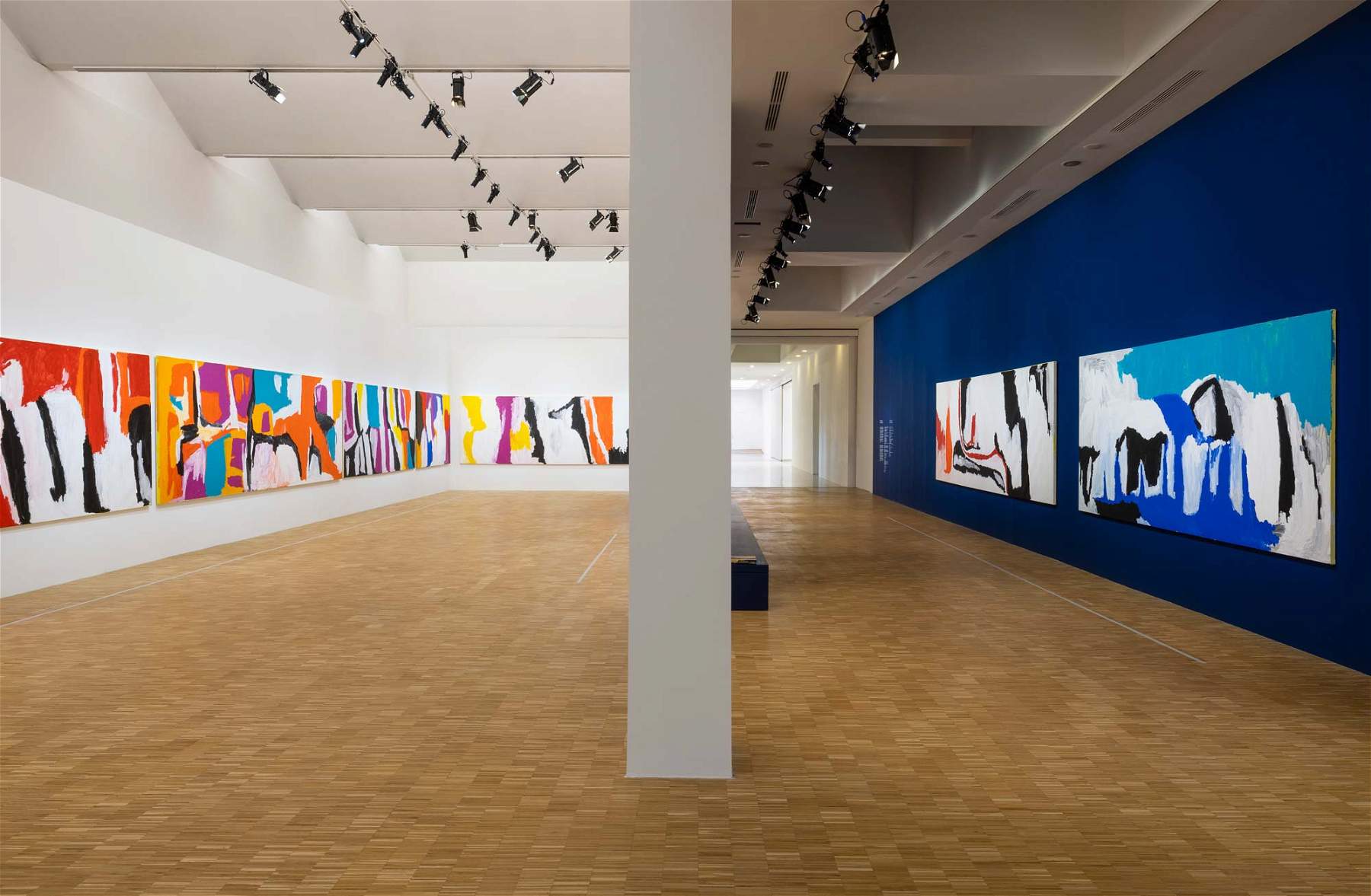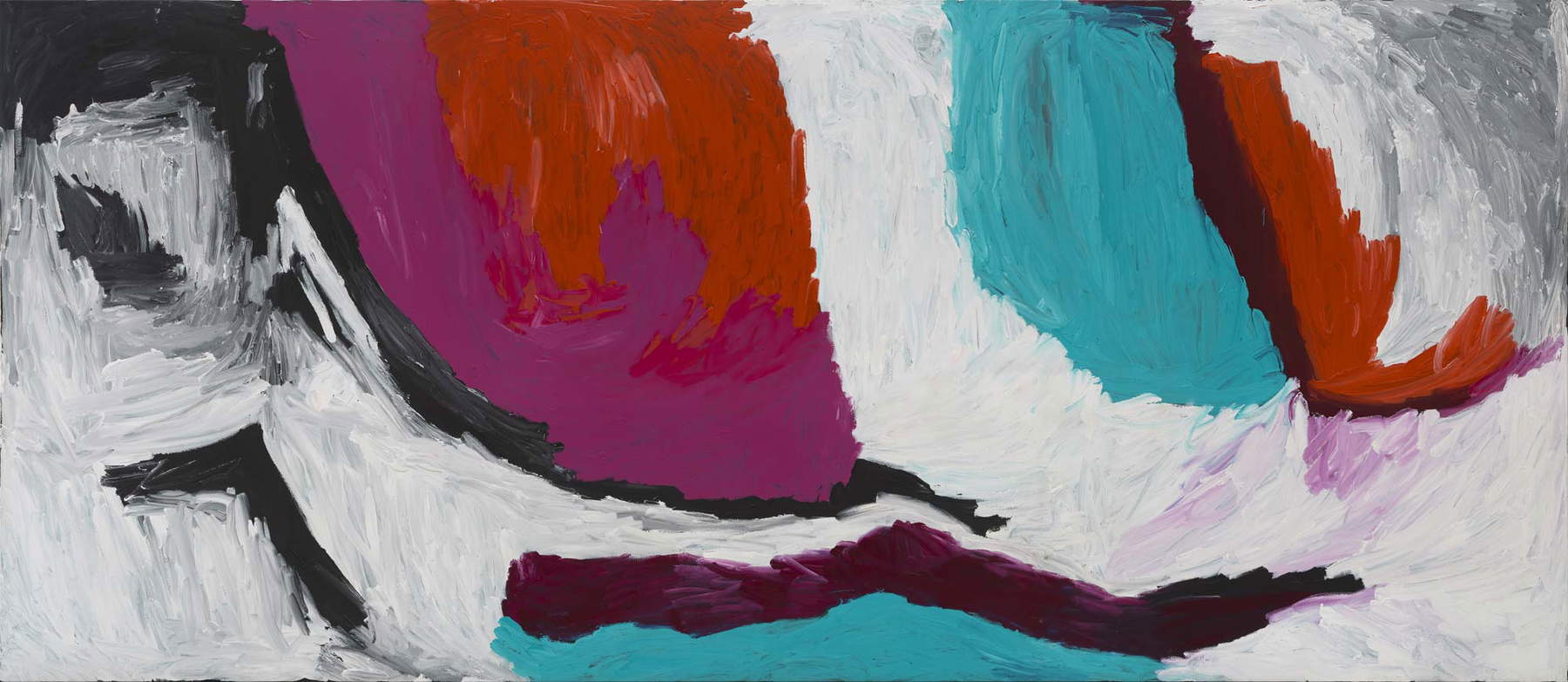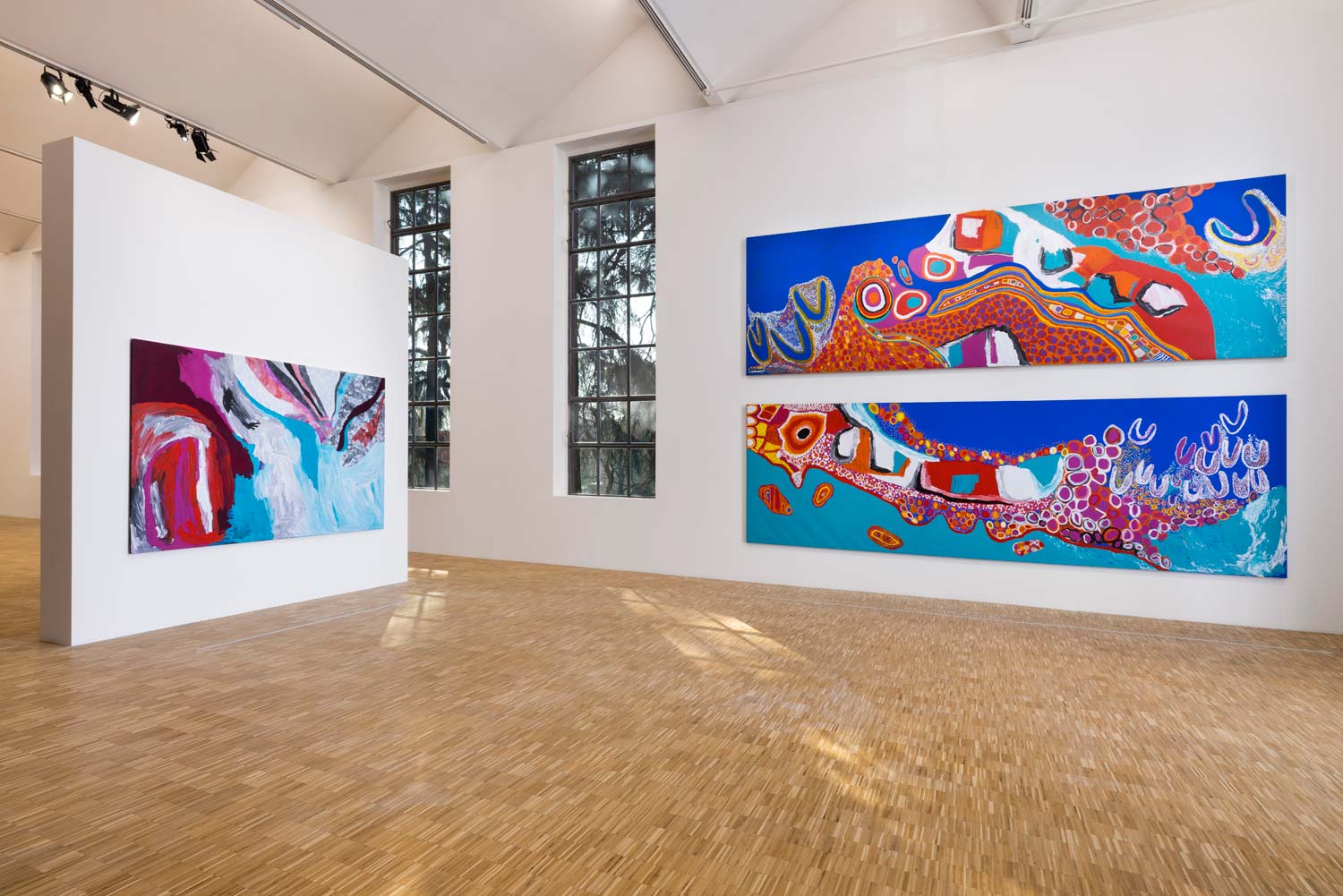From Feb. 16 to May 14, 2023, Triennale Milano and Fondation Cartier pour l’art contemporain present a major solo exhibition of Aboriginal artist Mirdidingkingathi Juwarnda Sally Gabori, titled simply by the artist’s name, also known as Sally Gabori, at the Triennale venue. Conceived and curated by Fondation Cartier and opened in Paris in 2022, the exhibition was a great success in France, due to the discovery of powerful painting and the strong history of an artist whose work is deeply rooted in the traditions of her people. This is the fifth exhibition presented under the eight-year partnership between the two institutions, which confirms the commitment to artists and geographies rarely represented in Western museums and exhibitions.
Considered one of the greatest contemporary Australian artists of the past two decades, Sally Gabori began painting in 2005, around the age of eighty, quickly achieving national and international fame as an artist. In a few years of rare creative intensity, and before her death in 2015, she created a unique, vibrant and colorful body of work with no apparent ties to other aesthetic currents or contemporary Aboriginal painting.
Bringing together 29 monumental paintings, this exhibition is organized in close collaboration with the artist’s family and the Kaiadilt community, including leading specialists in Kaiadilt art and culture. Some of them will be present in Milan at the opening of the exhibition to pay tribute to the artist, whose works continue to fascinate with their spontaneous, luminous and deeply original character. The exhibition was made possible by the generous participation of leading museums in Australia and Europe, and numerous private collectors.
Thanks to some exceptional loans from major Australian museum institutions such as the Queensland Art Gallery | Gallery of Modern Art, the National Gallery of Australia, the National Gallery of Victoria and HOTA, Home of the Arts, as well as the Musée du Quai Branly - Jacques Chirac in Paris, the Fondation Opale in Lens (Switzerland) and the Fondation Cartier, and generous loans from private collectors, the exhibition allows the public to discover a great colorist whose body of work testifies to a remarkable painterly modernity.
Mirdidingkingathi Juwarnda Sally Gabori was born in 1924 onBentinck Island in the Gulf of Carpentaria off the northern coast of Queensland, Australia, and passed away in 2015. She was a Kaiadilt woman who spoke the Kayardilt language. Her name, Mirdidingkingathi Juwarnda, comes from the Kaiadilt tradition, which states that each person is named according to their birthplace and totemic ancestor. Therefore, Mirdidingkingathi indicates that Sally Gabori was born in Mirdidingki, a small inlet located south of Bentinck Island, and that her “totem animal” is the juwarnda, or dolphin. Largely isolated, with a population of 125 in 1944, the Kaiadilt were the last Aboriginal people in coastal Australia to come into contact with European settlers. Sally Gabori and her family led a traditional lifestyle, relying almost entirely on their island’s natural resources. Like most women, Sally was involved in fishing, maintaining the stone pots that dotted the island’s shores, and weaving baskets using natural fibers. From the early 1940s onward, Presbyterian missionaries who had settled on Mornington Island, north of Bentinck Island, in 1914 tried unsuccessfully to persuade the Kaiadilt to join their mission. Their attempts were in vain. However, in 1948, following a cyclone and tidal wave that flooded much of the Kaiadilt land and contaminated freshwater supplies, the last 63 surviving Kaiadilt residents, including Sally Gabori and her entire family, were evacuated to the Presbyterian mission on Mornington Island. Their exile, which they believed would be only temporary, would last several decades. When they arrived in Mornington, the Kaiadilt were housed in camps along the beach and the children were separated from their parents and placed in dormitories within the mission. They were forbidden to speak their native language, thus creating a deep rift with their culture and traditions. From the 1990s onward, after many years of struggle for recognition of Aboriginal land rights, Australia passed legislation that finally recognized the Kaiadilt’s rights to their land. A settlement, referred to as an outstation, was established at Nyinyilki on Bentinck Island, allowing those Kaiadilt who wished, including Sally Gabori, to return to their native island and remain there temporarily.
Sally Gabori began painting in 2005, at more than 80 years of age. Her paintings, although abstract in appearance, are as much topographical references as they are stories having deep meaning for her, her family and her people. They are a celebration of various places on her home island that Sally Gabori and members of her family were not able to visit for many years, even though they were named after them. The places she paints are also associated with the political struggle for recognition of Kaiadilt land rights. Beyond the Kaiadilt iconographic tradition, Sally Gabori’s paintings testify to boundless imagination and great formal freedom, fueled by endless variations of light on the landscape, caused by the changing climate of the Gulf of Carpentaria. With color combinations, play of shapes, overlapping surfaces and different formats, Sally Gabori has painted more than 2,000 canvases in the nine years of her artistic career, exploring, at an accelerated speed, the multiple resources of pictorial expression. Sally Gabori began working on a small scale, painting with a thin brush and undiluted colors. In 2007 she switched to monumental canvases more than six meters long, without losing the vigor of her gesture or the boldness in her use of color. That same year, inspired by an early return visit to her homeland, Sally Gabori undertook to map on canvas the many places dear to her, producing three works over six meters long in collaboration with her sisters and nieces, all born on Bentinck Island before the exodus. Toward the end of her career, she also painted a series of large canvases with her daughters, Amanda and Elsie, and encouraged her other daughters, Dorothy and Helena, to join the Mornington Island Arts and Crafts Center. After his death in 2015, the Queensland Art Gallery | Gallery of Modern Art in Brisbane and later the National Gallery of Victoria in Melbourne presented a major retrospective of his work in 2016 and 2017, respectively. His paintings are now in many of Australia’s most important public collections and in several European collections.
All information can be found on the Triennial website.







 |
| Milan, at the Triennale the paintings of the aboriginal woman who began painting at age 80 and achieved worldwide fame |
Warning: the translation into English of the original Italian article was created using automatic tools. We undertake to review all articles, but we do not guarantee the total absence of inaccuracies in the translation due to the program. You can find the original by clicking on the ITA button. If you find any mistake,please contact us.